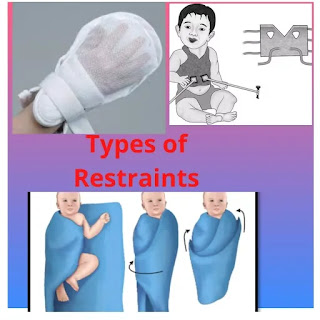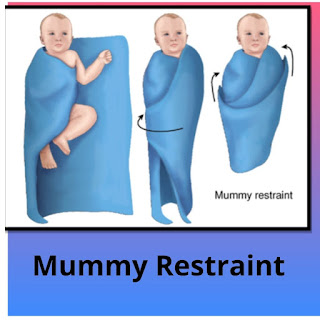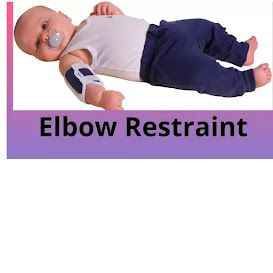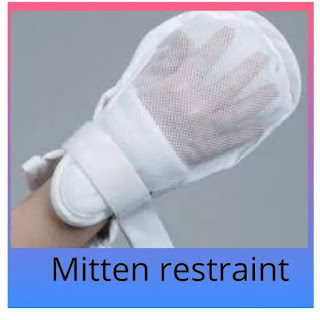Restraints are protective measures to limit movements . There can be short term restraints to facilitate examination and minimize the child`s discomfort during special tests, procedure and specimens collections. Restraints can also be used for a longer period of time to maintain the child`s safety and protection from injury.
When Should be Restraints used in child ?
Restraints should be used only when it is absolutely necessary. The Nurse should give the child a choice between trying to be still when asked for or to be restrained.
- If the child fails to keep himself to keep still, then restraints may be used with proper explanation about its purpose depending upon the level of understanding of the child .
- Restraints should be removed as early as possible .
General principles for Use of Restraints
- Appropriate, safe and comfortable restraints should be used.
- Restraints should be loose as possible, tight restraints prevents normal circulations.
- Sufficient padding must be used for extremity Restraints to prevent skin irritation.
- Restraints must be checked every 15 to 30 minutes for any hazards. It can be removed periodically at least every 2 hours.
- Child`s comfort and body alignment to be maintained.
- Any required Knots should be tied in a manner that permits quick release.
- Proper documentation is required when restraints are in use.
Types of Restraints
Commonly used restraints for children are mummy Restraints , Elbow Restraints , Extremity Restraints , Jacket Restraints , Finger Restraints , crip-top Restraints etc.
1. Mummy Restraints :
- It is short type of restraints used in infants and small children during examination and treatment of head and neck.
- Mummy restraints is used to immobilize the arms and legs of the child for a short period of time.
- Mummy restraints involves securing a sheet or blanket around the child`s body in such a way the arms are held to the side and leg movements are restricted.
2. Elbow Restraint :
- Elbow restraint is used to prevent flexion of the elbow in an extended position so that the infant cannot reach the face.
- Elbow restraint is especially useful for infants receiving scalp vein infusion , nasogastric tube feeding , surgery of face or head , repair of cleft lip or cleft palate .
3. Extremity Restraints :
- Extremity Restraint may be used to restraint infants and young children for the procedures such a IV therapies and urine collection .
- Extremity Restraint is also used to immobilize one or more extremities.
Clove hitch Restraint :
- Clove- hitch Restraint is a type of extremity restraint which is done with gauze bandage strip ( 2 inch wide) making figure of eight.
- The end of the gauze to be tied to the frame of crib .This restraint should be used with padding pf wrist or ankle.
4. Abdominal Restraints :
- Abdominal restraint helps to hold the infant in supine position on the bed.
- It should be applied with precautions so that the respiratory movements of the abdomen are not inhibited
5. Jacket Restraints :
- Jacket restraints is used to help the child remain flat in a supine position or to prevent the child from falling from crib, highchair, wheelchair.
- The jacket is put on with the strings and the opening in the back and tied securly.
- The long tapes are secured appropriately i.e. to the frame of the crib.
6. Mitten Restraint or finger Restraint :
- Mitts are used for infants to prevent self injury by hands in case of burns, facial injury or operations, eczema of the face or body
- Mitten can be made wrapping the child`s hands in gauze or with little bag putting over the baby`s hand and tie it on at the wrist.
Also read : Image Based question
Hazards of Restraints :
- Inappropriate use of restraint may cause injury to the brachial plexus, sore or gangrene, exhaustion and loss of energy.
- Prolonged immobility of children may result in physiologic loss of muscular strength and flexibility and peripheral circulation.
- Long period of restraint may result in psycho;logical hazards and inability to develop motor and psychosocial skills in children.




